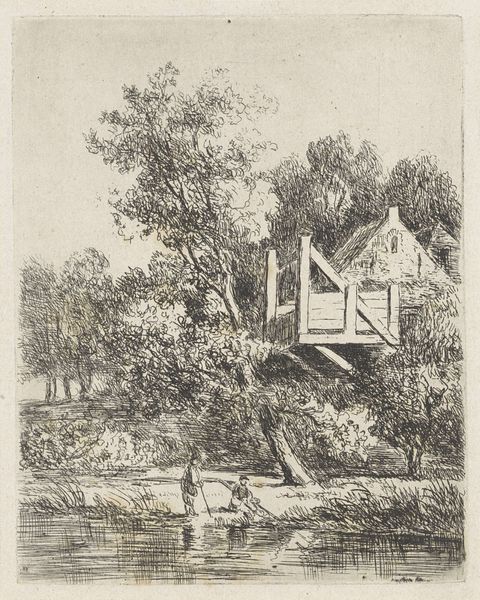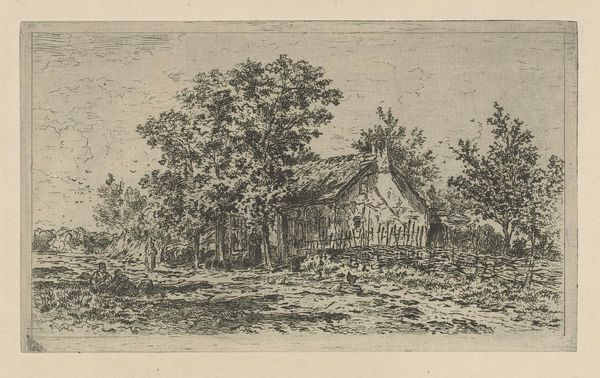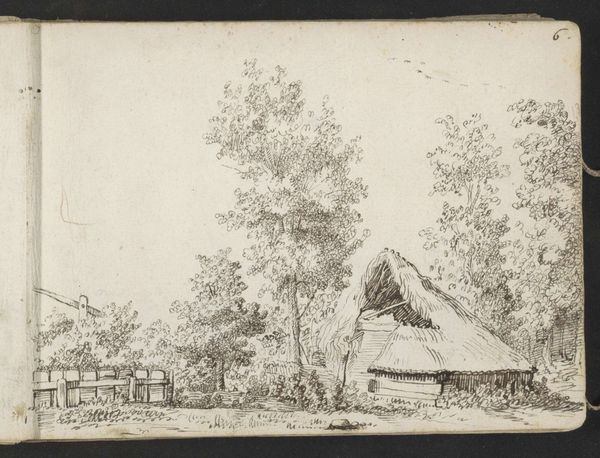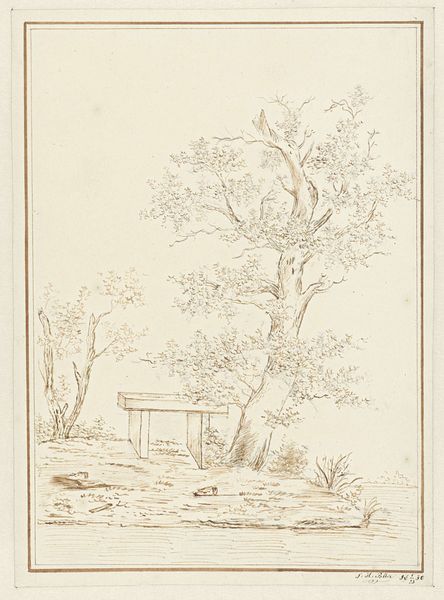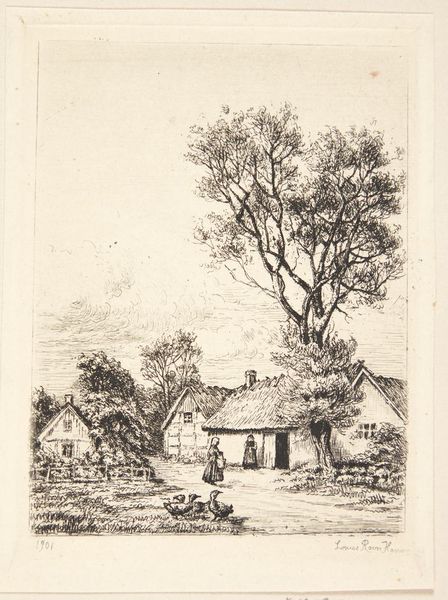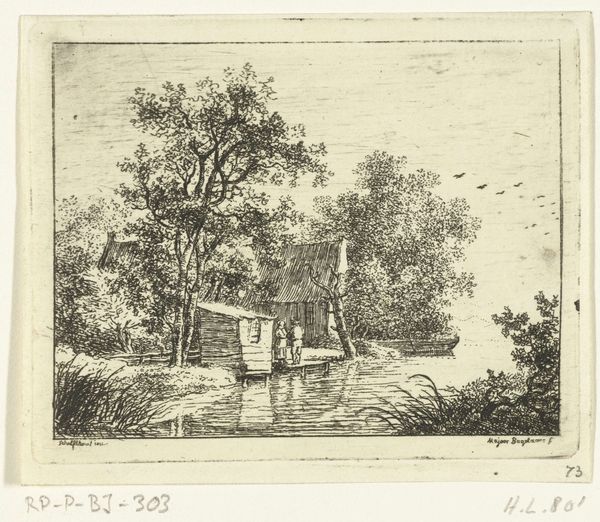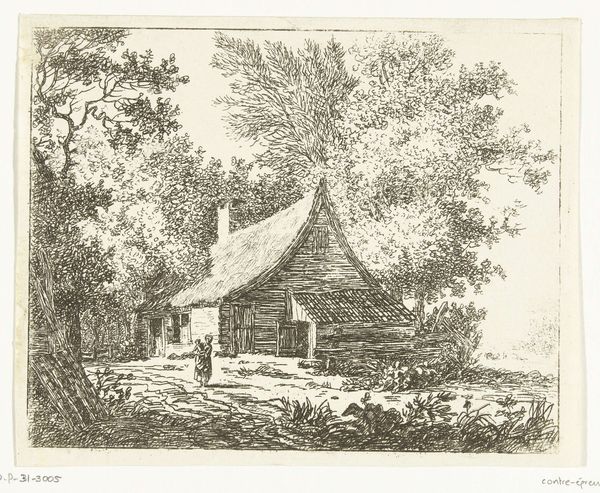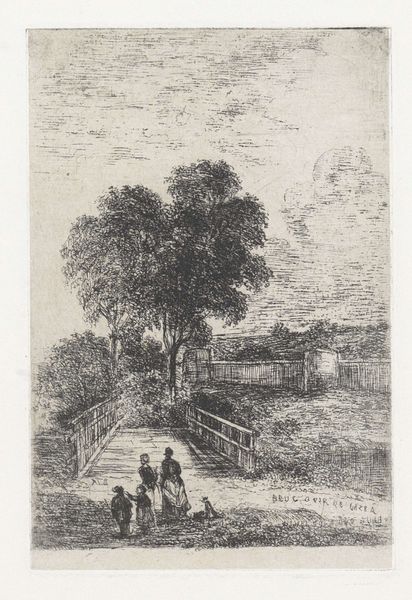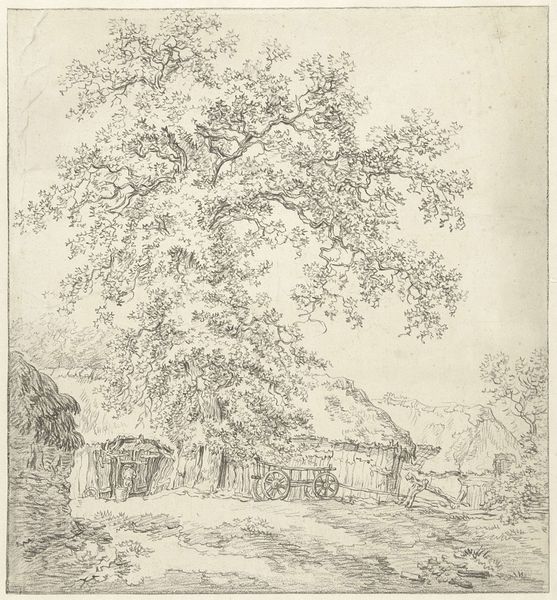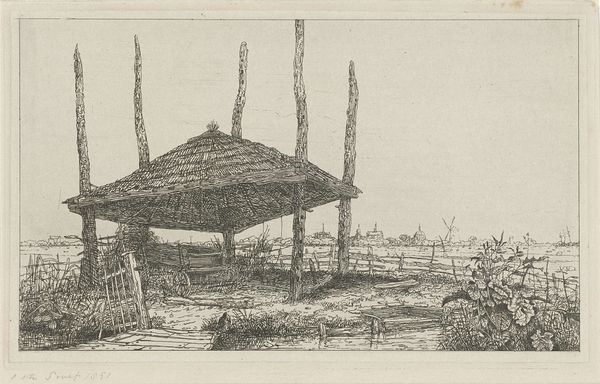
drawing, print, etching
#
drawing
# print
#
etching
#
landscape
#
etching
#
line
Dimensions: height 77 mm, width 60 mm
Copyright: Rijks Museum: Open Domain
Editor: So, this is "Ruiter bij boerderij," or "Horseman at a Farm," by Anthonie van den Bos, made sometime between 1778 and 1838. It's a small etching, housed here at the Rijksmuseum. It's a rather busy little landscape, with lots of detail packed into such a tiny frame. What stands out to you the most? Curator: You know, it’s interesting how such a seemingly simple scene can hold so much depth. The line work is exquisite, almost frantic, yet it evokes a very still, quiet moment in the Dutch countryside. Do you notice how the artist uses line variation to create texture? The dense hatching in the trees contrasts with the more open, flowing lines of the path and sky. It reminds me of the transience of time itself, doesn’t it? The fleeting moment of observation caught with hurried scratches, permanently pressed. Editor: That's a beautiful way to put it. I was so caught up in the overall image I didn't notice the variations in line. So, is he perhaps more concerned with capturing the fleeting experience of the rural scene, not just the physical elements of it? Curator: Exactly! And there's a certain poetry in the use of etching, isn't there? A controlled violence of acid, the patient scraping and pressing. The layers, too, represent our experiences. The journey one must undertake. I believe it invites us to consider how we, too, might appreciate our current stage in time. Editor: I see what you mean! The density creates almost a visual cacophony, and the details create clarity when you allow yourself to focus. Curator: A cacophony becoming a symphony, a life appearing out of seemingly random moments – that’s where art and life meet, isn’t it? Editor: Absolutely, thank you for that beautiful insight.
Comments
No comments
Be the first to comment and join the conversation on the ultimate creative platform.

